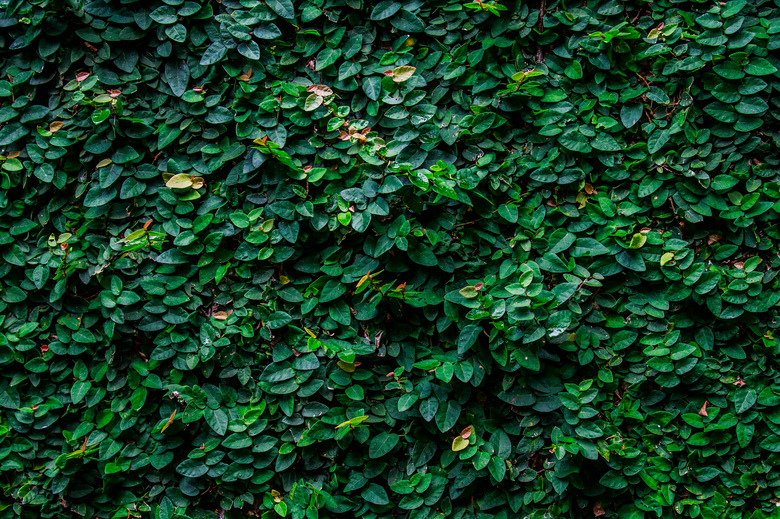How To Care For A Creeping Fig
The creeping fig (Ficus pumila, USDA zones 8-11), also known as climbing fig, fig ivy and creeping ficus, is a climbing species. It's regularly used as a ground and wall covering in warmer parts of the country and is often seen as a houseplant in cooler areas. Species plants feature several cultivars, including the minima and variegata, all of which are low-maintenance evergreens with small, variegated leaves.
Basic Planting Guidelines and Care
Basic Planting Guidelines and Care
Creeping figs can grow outdoors as perennials in USDA plant hardiness zones 8 through 11. Homeowners typically use them as wall or fence covers, but they can also serve as a ground cover. When climbing a wall, climbing fig vines can grow up to 20 feet tall. Plant creeping fig in an area that receives full or partial shade and features well-draining soil.
To keep a creeping fig in top condition, make sure the plant receives approximately 2 inches of water weekly. If you receive less than 2 inches of rainfall on a given week, you should water your plant.
For indoor care, keep your creeping fig's soil moist but not overly wet. You can determine when your creeping fig should be watered by checking the top of the soil – if it's dry, it needs to be watered. Make sure to avoid direct sunlight; a creeping fig grows best in brightly lit and minimally lit areas.
During the spring and summer, fertilize your plant approximately once a month, but don't fertilize your creeping fig in the fall or winter. If your home is very dry during the winter, you may need to provide extra humidity for the plant. Inside, creeping figs are displayed as either hanging houseplants or trailing potted plants. If you choose to place your climbing fig vine in a pot, consider adding a pole to the pot or placing your plant next to a wall for the vine to climb if you don't want it to trail out of the container.
Regardless of where you plant your climbing fig vine, understand that once it attaches itself to a wall, it can be very challenging to remove. If you do pull a creeping fig off of the wall, there may be damage to the surface.
Propagating, Repotting and Pruning
Propagating, Repotting and Pruning
The creeping fig is an easy plant to propagate by repotting the stem cuttings. When repotting, understand that while the creeping fig prefers to be somewhat pot bound, it also enjoys spreading its roots as it would outside. Repotting should occur every two years. Once you have removed your creeping fig from its existing pot, cut back the roots outside of its main root section. However, if you plan to use a larger pot so the plant can grow, don't cut the roots.
As climbing fig vines age, they may become woody and the leaves will appear aged. To make your plant look younger again, displaying finer leaves and vines, heavily prune back the more mature parts of the plant so it can regrow young, healthy leaves.
Pruning is also done to maintain the size of the plant so it can properly fit in its space. All pruning and repotting should be done in the spring.
Dangers, Tolerances and Diseases
Dangers, Tolerances and Diseases
Creeping figs are considered toxic to both cats and dogs. However, they're hearty plants that are tolerant to deer, rabbits, drought, heat and humidity, wind and a coastal environment.
These plants are subject to several pests. Creeping figs can become infested by a variety of insects, such as thrips, spider mites, mealybugs and scale insects. They're also susceptible to southern blight and fungal leaf spots.
